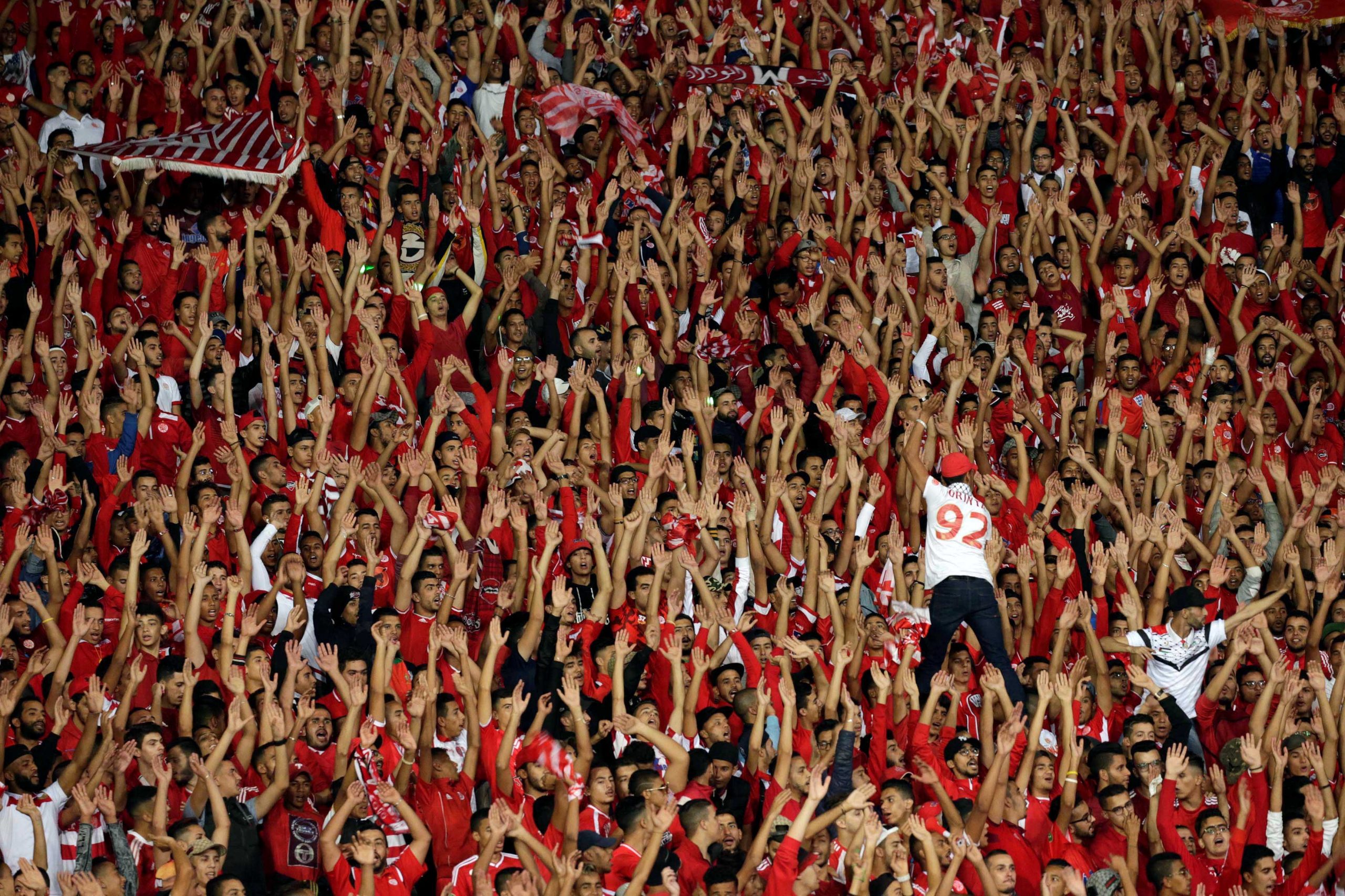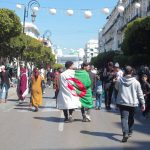The secret of North Africa’s football dominance
The CAF Champions League, CAF Confederation Cup and CAF Super Cup are currently held by North African teams. So what’s behind this region’s dominance in continental football?
Author:
26 April 2019

An air of familiarity engulfs the CAF Champions League semifinals. Title-holders Esperance de Tunis will host the 2015 winners, TP Mazembe from the Democratic Republic of Congo, on 27 April, and then travel to Lubumbashi the following week for the second leg. The 2016 champions, South Africa’s Mamelodi Sundowns, take on the 2017 victors Wydad Casablanca of Morocco in Rabat on 26 April in the first leg.
Meeting familiar foes is quite common in Africa’s premier club competition, especially for North African teams who have dominated this competition. Moroccan, Algerian, Tunisian and Egyptian clubs have made 19 appearances in the previous 15 finals. With the exception of some South African and Congolese sides, the North Africans have reigned supreme in most of those meetings.
There are several factors that contribute to North African footballing supremacy, the principal explanation being money.
Related article:
The biggest clubs in the Maghreb can cobble together yearly budgets upwards of $10 million (just over R143 million). Last season, for instance, Wydad Casablanca set a club record by generating $12 million (over R172 million). Esperance de Tunis announced a budget of $8.5 million during the 2015/2016 season. Cairo giants Al Ahly and Zamalek generate even larger sums than those.
Even disregarding the outlier that is new Egyptian club Pyramids FC – which spent more than $50 million (almost R717 million) in transfers last summer – the simple truth is that many North African clubs possess sizeable budgets, allowing for the construction of infrastructure and better player acquisition.
Football as a bargaining chip in Nigeria
Football investment is not a matter of simple economics, as proven by Nigeria, where finding private investment remains a chore in the continent’s largest economy.
“The richest man in Africa, Aliko Dangote, is Nigerian,” Andrew Randa, a Nigerian journalist who reports on the Nigerian Premier Football League (NPFL), said.
“He was rumoured to have wanted to take over [English giants] Arsenal FC twice, and Nigerians ask why he cannot invest in Kano Pillars, a club from his home region? But football is political in Nigeria, it is used as a bargaining chip. Most Nigerian clubs revolve around government agencies.”
Former Nigerian national team coach Christian Chukwu recently spoke on the necessity of private investment.
“For now, everything is in the hands of government; but there will be significant improvement the time private investors, with real commitment, come in and own [a] greater percentage of the shares. Government cannot continue to run every aspect of the system, it’s not possible at all,” Chukwu told The Independent of Nigeria.
Related article:
Public funding seems to be the prevailing model throughout the continent, but it is particularly commonplace in West Africa. Speaking to German publication DW (Deutsche Welle) in 2017, Gabon’s CF Mounana striker Chico Sassou succinctly explained the problem with government funding in domestic football.
“Here in Gabon, football is organised by the state. When the state has problems, as a player, you get less money.”
One club that has recently bucked the trend in West Africa is Guinea’s Horoya AC, which is de facto owned by multi-millionaire Antonio Souaré.
Souaré ensures Horoya has a budget in the ballpark of $5 million (just over R71 million) for operating costs. The CEO of Groupe Business Marketing is also financing a brand-new stadium and a state-of-the-art football academy 40 kilometres from Conakry.
Nevertheless, the Horoya model of private investment remains extremely rare in West Africa.
In East Africa, diversified revenue streams are slowly being established. The Ugandan Premier League recently signed a 10-year, $7 million (just over R100 million) TV deal with Chinese television channel StarTimes. The Kenyan Premier League has developed a partnership with La Liga, which it consults concerning television deals as well. The Bakhresa Group in Tanzania has shown that they can run a well-oiled machine with Azam FC.
Yet both West and East Africa are very behind when it comes to developing football infrastructure. Salim Masoud Said, a Tanzanian journalist who has travelled throughout North and East Africa, attests to the gulf in quality of regional installations.
“A club in the second division in Tunisia like [Olympique de] Beja has facilities that would be the envy of giants in Tanzania like Yanga or Simba,” Said told New Frame.
Volcanic atmospheres tilt the scales
Yet even when the money and facilities are in place, as is the case in South Africa, a multitude of additional factors feed North African dominance in the Champions League. The home-and-away format of the knockout stages, in particular, is an advantage in the Maghreb.
During the tail end of the 1990s, the ultra movement filtered down from Europe to North Africa. As a result, organised groups of supporters began choreographing chants, displaying tifos and travelling thousands of kilometres to away matches.
The first ultra groups appeared in Tunisia and Morocco before spreading to Egypt and Algeria. As a result, North African stadiums began to harbour volcanic atmospheres that spur on hosts and intimidate visitors.
Related article:
“There’s a fear factor and mental block when most West African teams travel to North Africa,” Randa insists.
“When they play North Africans, they just switch off. It happens year after year,” the Nigerian journalist continues.
Sundowns’ coach, Pitso Mosimane, further fleshed out the intimidation his side experienced when playing in Algeria.
“The big thing about North Africans is all about the intimidation. When we were playing [ES] Setif, I remember at one stage one of my players was running down the line from the right side and the bottles were dropping from the top. I mean, how do you keep playing?”
In another statement, Mosimane indicated that Zamalek supporters issued death threats to his players leading up to the final of the 2016 CAF Champions League final the Brazilians won.
“There have been messages sent to the players, whoever has Instagram, Facebook, Twitter… they’ve received death threats, all of them.”
Following the Egyptian and Tunisian revolutions, the governments of both nations imposed caps on attendance, slightly reducing the advantage.
The diaspora: a valuable resource
In addition to the European influence of ultra groups, North African also benefit from their proximity to Europe when attracting players from their talented diasporas.
Anice Badri, at Esperance de Tunis, is the best example of a player from the diaspora having a direct impact at an African club. After cutting his teeth at Olympique Lyonnais, Badri meandered through the lower leagues in France and Belgium before crossing the Mediterranean to play for Tunisia’s most successful club.
Badri has since become a fixture for both the Blood and Gold and the Tunisian national team. Not only did he score the goal that qualified the Carthage Eagles to the 2018 World Cup, he also started all three World Cup matches in Russia, scored the winning goal in the 2018 CAF Champions League and finished as the competition’s leading scorer.
During the 2018/2019 CAF Champions League campaign, clubs from the Maghreb used five players who were born abroad and returned to play for clubs in their country of origin.
Arab cultural crossover pays off
The cultural ties North African nations share with other countries in the MENA region (Middle East and North Africa) also provides an opportunity other African nations are simply not afforded.
In 2017/2018, the United Arab Football Association (UAFA) announced the return of Arab Club Championship, a competition in which 22 Arab nations send clubs of their choosing to participate in a 32-team knockout tournament.
Though the competition also includes clubs from Comoros, Djibouti, Somalia and Sudan, each of its African winners has hailed from North Africa.
An enticing $7.5 million (over R107 million) purse is reserved for the victors, exactly three times more than what the Confederation of African Football offers the winners of the Champions League.
For many Tunisian, Algerian, Moroccan and Egyptian supporters, the Arab Club Championship provides direct competition to the CAF Champions League.
“Tunisian clubs try to find the balance between African cups, linked with recent history, but they are also interested in Arab cups, because you can earn more money. For some supporters, you can also play in better conditions, with better officiating and pitch quality,” says Farouk Abdou, a freelance journalist who covers North African football.
On 18 April, Etoile du Sahel defeated Saudi Arabian club Al Hilal and captured the Arab Club Championship. Apart from the hardware, the Sousse outfit will also benefit from a sorely needed lump sum, giving the Tunisians a healthy head-start ahead of the upcoming transfer window. Added to talent from the diaspora and the stadium fear factor, it’s such financial muscle that has powered North African teams to dominating African football.



